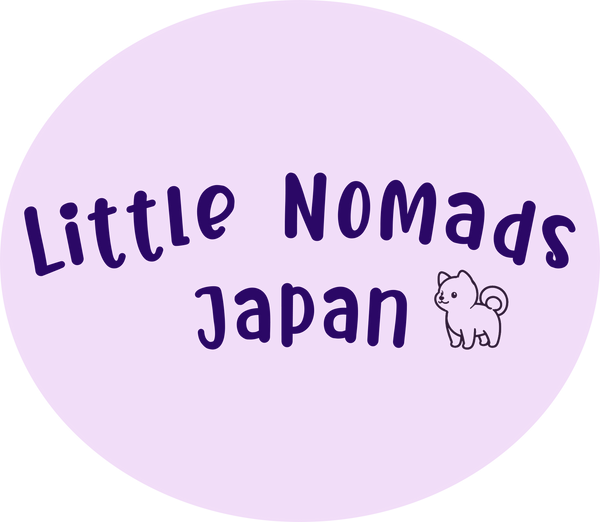
A Parents' Guide to Omamori at Japanese Shrines & Temples
Share
Japan is home to countless temples and shrines, each with its own unique charm, but some stand out as must-visit spots.

In Kyoto, you’ll find the iconic Fushimi Inari Taisha, famous for its thousands of bright red torii gates, and Kinkaku-ji, the glittering Golden Pavilion that looks like a scene from a storybook.

Over in Tokyo, Meiji Shrine offers a peaceful escape in the heart of the bustling city, while Senso-ji in Asakusa is Tokyo’s oldest temple and perfect for soaking in Japan’s history and vibrant culture.
And if you go to Hiroshima, don’t miss Itsukushima Shrine on Miyajima Island, with its “floating” torii gate—an unforgettable sight.

Even though your toddler might not appreciate the intricate architecture or serene atmosphere as much as you do, you can make it fun for them by collecting omamori (守り) from each shrine you visit. These small, colorful charm pouches are said to bring good luck and protection. They often come in beautiful designs, and some even feature playful, kid-friendly motifs like animals. Letting your little one choose their favorite adds a bit of adventure to the day and gives them a special keepsake from the trip.
What’s Special About Omamori?
Omamori are more than just pretty keepsakes—they’re thought to carry spiritual blessings from the shrine or temple where they’re created. For centuries, these charms have been used to ward off misfortune and bring good luck.
When traveling with children in unfamiliar surroundings, having a small token of protection can be both reassuring and a unique memento of your visit.
Which Omamori Should You Choose for Your Family?
1. For Health and Wellness (健康祈願, kenkō kigan)
Traveling with kids often means runny noses and the odd grumpy mood. A health-focused omamori is believed to help protect your family from illness and keep everyone feeling their best.

Shrines like Gojoten Shrine in Ueno are known for health blessings, but you’ll find similar amulets at many other shrines and temples.
2. For Safe Travels (交通安全, kōtsū anzen)
Whether you’re driving, flying, or hopping on Japan’s iconic trains, safe travel charms are a must. These amulets are said to protect you on the go, giving you peace of mind throughout your journey.

Shrines near major transport hubs, such as Narita-san Shinshoji Temple (Narita) or Kōtoku-in (Kamakura), often sell travel omamori.
3. For Your Little Ones (子供守り, kodomo mamori) and Safe Childbirth (安産守り, Anzan Mamori)
Traveling with young children or expecting a new addition? There are two types of omamori that may bring extra comfort to your journey. Kodomo Mamori are designed to protect children, offering blessings for their safety and well-being. Meanwhile, Anzan Mamori focus on safe childbirth, making them a thoughtful choice for expecting parents.

Shrines like Suitengu (Tokyo) and Itsukushima Shrine (Hiroshima) are famous for their family-focused blessings.
4. To Ward Off Bad Luck (厄除け, yakuyoke)
Sometimes, it’s reassuring to have an extra layer of protection against accidents and misfortune. Omamori to repel evil spirits or bad energy may help you feel more at ease while exploring unfamiliar places.

You’ll find these at nearly every shrine, but Meiji Shrine (Tokyo) and Fushimi Inari Taisha (Kyoto) are particularly popular for protective blessings.
5. For Growing Families (子授け守り, ko-sazuke mamori)
If you're hoping to expand your family, Japan’s shrines also offer blessings to support this special journey. Look for "child-granting charms," which are said to bring good fortune to couples trying to conceive.

Shrines like Suitengu Shrine (水天宮) in Tokyo and Kashima Jingu (鹿島神宮) in Ibaraki are particularly known for their fertility blessings. These amulets can be a beautiful way to connect with Japan’s culture while inviting a little extra luck and positivity into your life.
Where to Find Omamori
While there are famous shrines like the ones mentioned above, you’ll soon notice there are countless others scattered all over. Each one has its own unique charm, history, and style of omamori. You might stumble upon a quiet local shrine tucked into a neighborhood or visit a grand, bustling one surrounded by tourists.

No matter where you go, you’ll find amulets to fit your family’s needs. The smaller, lesser-known shrines can often feel more personal and are worth exploring.
Tips for Visiting Shrines with Kids
- Let Them Choose: Kids will love picking out their own omamori. It makes the experience special and gives them something to treasure from the trip.
- Learn the Rituals: Teach your children how to clap and bow at the shrine—it’s simple, fun, and helps them connect with Japanese culture.
- Plan Ahead: Many shrines have long paths or stairs, so bring a baby carrier or a stroller that’s easy to manage.
Make Omamori Part of Your Family Adventure
Visiting shrines isn’t just about sightseeing—it’s an opportunity to connect with Japan’s culture and traditions. Picking up an omamori along the way can turn into a fun family ritual. Each one represents a blessing for your trip, and when you return home, it’ll remind you of your adventures in Japan.

So, next time you find yourself at a shrine, take a moment to browse the omamori on display. Whether it’s for health, safe travels, or just a little extra luck, there’s a charm waiting to bring blessings to your family.
Safe travels and happy exploring! 😊
